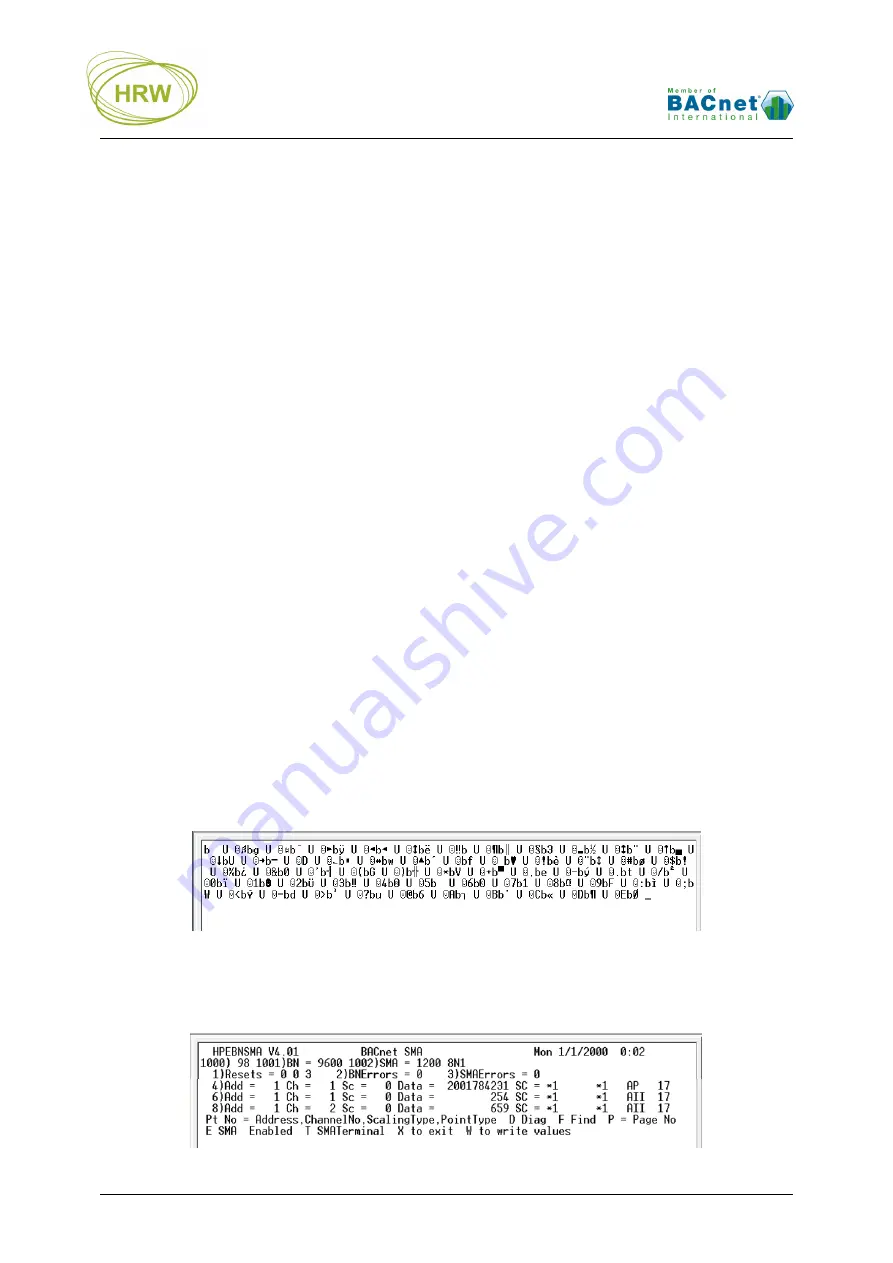
HRW HPE-BNSMA V401 Manual 111201.doc E. & O. E. / Subject to change without notice
Page 5 of 16
Additional Settings
Some PC platforms may need keyboard response adjustment for initial Terminal Mode success. These
settings may be done via the PC Control Panel >> Keyboard Settings:
Fastest Repeat rate
Shortest Delay time
Fastest Cursor Blink rate
Connecting at 76800 Baud Rate
Because HyperTerminal does not support 76800 baud then after setting to 76800 the device baud rate
will remain at 9600 baud for HyperTerminal communication and switch to 76800 after Writing the new
baud rate and eXiting terminal mode.
To allow later terminal communication a device set with 76800 baud will operate at 9600 baud for the
first 5 seconds after a power-up. If no attempt to connect the terminal at 9600 baud is made within 5
seconds of a power-up then the device will automatically switch to 76800 for normal network operation.
Saving HyperTerminal Settings
For ease of connection it is recommended to save the HyperTerminal setup for each baud rate you may
wish to use with an easily recognised configuration name. For example:
HPECOM
48
(4800)
HPECOM
96
(9600)
HPECOM 19.2 (19200)
HPECOM 38.4 (38400)
HPECOM 57.6 (57600)
Break in to Terminal Mode
When HyperTerminal is running and the HPECOM cable is connected to the device the initial terminal
screen will be receiving an ASCII character dump which is the BACnet transmission from the device.
The ASCII dump will appear differently with different device address setting and if HyperTerminal baud
rate is different to the baud rate set in the device. Below is an illustration of how the ASCII dump will
look for a device at default settings; address 98 and 9600 baud.
To break in to terminal mode set Caps Lock on and hold the
‘T’
character key continuously
(TTTTTTT…). After five (5) T’s have been sent to the device it will switch to terminal mode. At this point
the BACnet activity on the network will be halted and the device will display the default user screen, an
example of which follows:


































